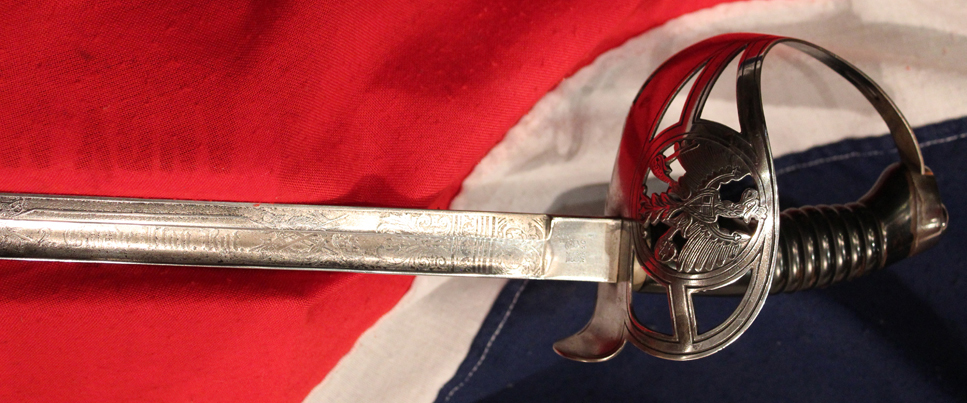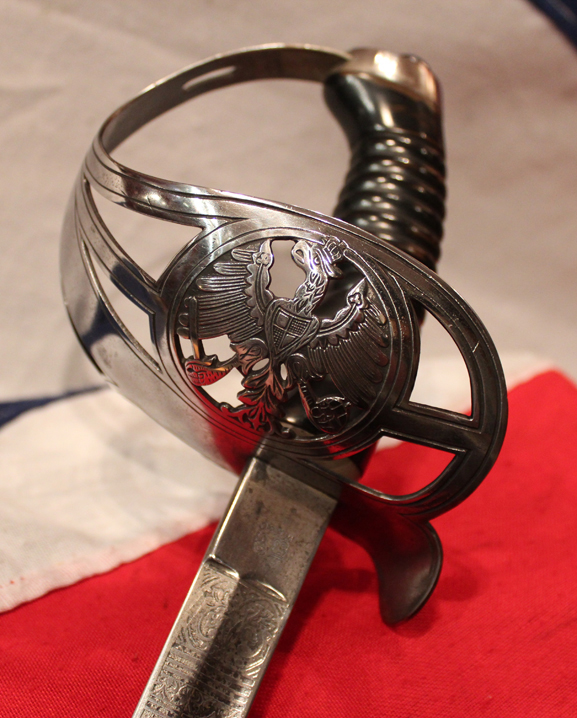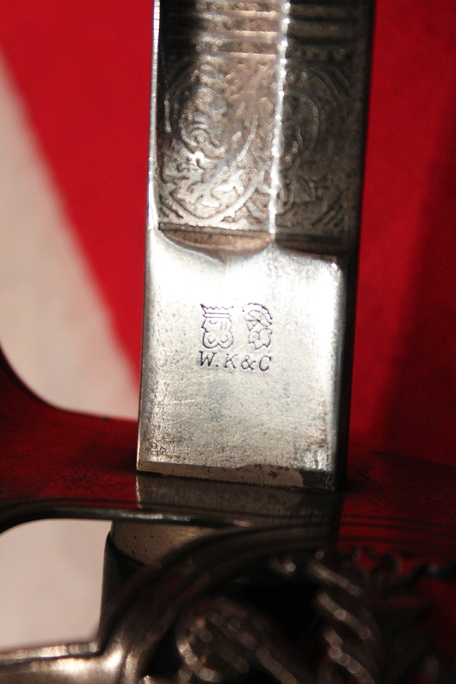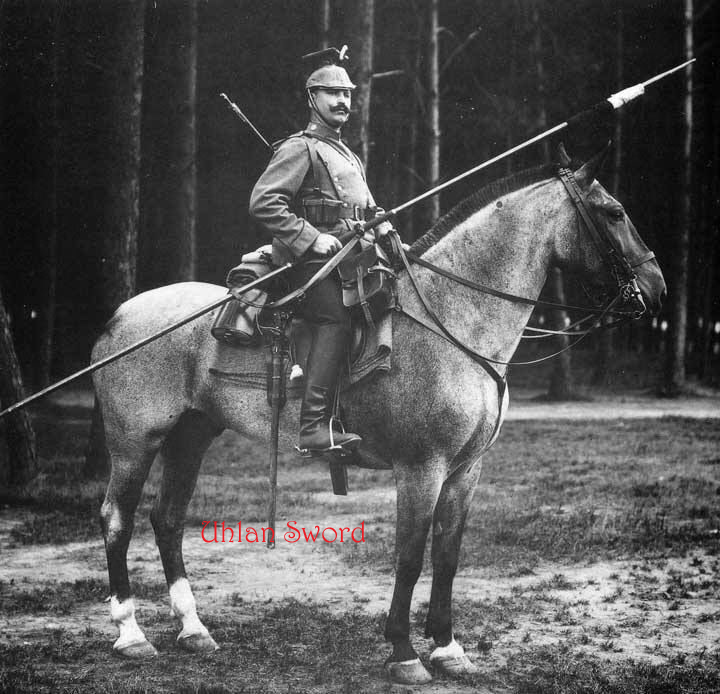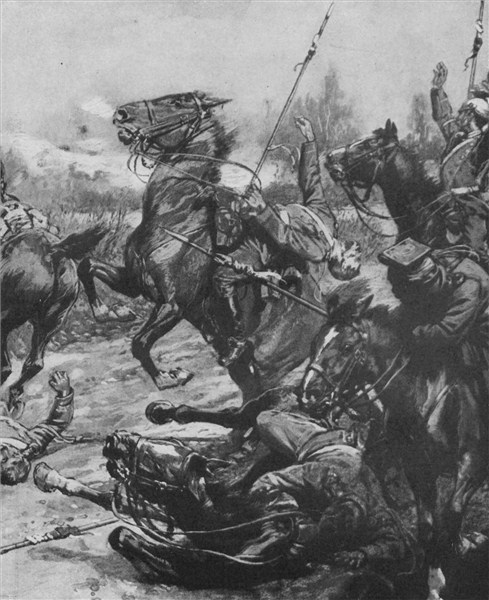A Fine & Very Rare WWI Prussian Regimental Officer’s Sword of The 2nd Imperial Garde Uhlan Lancers Regiment
Fully etched blade with the Imperial Garde Garter Star motif and regimental name of the [Imperial Prussian] Garde 2nd Uhlan Regiment. The Imperial German Garde were the regiments that composed the elite bodyguard regiments of the Kaiser.
The regiment of Field Marshal Schlieffen, inventor of the world renown military tactic, the ‘Schlieffen Plan’
Included in the officers of the 2nd Garde Uhlans was Field Marshal Count Alfred Graf von Schlieffen who joined the 2nd Garde Uhlans as a young officer in Berlin. He first saw active war service as a staff officer with the Prussian Cavalry Corps, in the uhlans, at the Battle of Koniggratz of 1866, during the Austro-Prussian War. His career saw rapid promotion due to his obvious tactical skills. He became Lieutenant General on 4 December 1888, and eventually General of the Cavalry on 27 January 1893., followed by Field Marshal. Schlieffen was perhaps the best-known contemporary strategist of his time, although criticized for his "narrow-minded military scholasticism." In World War I the regiment was part of the Guards Cavalry Division fighting on the Western Front. After the mobilization the regiment moved through Belgium and was involved in the First Battle of the Marne before the general retreat to Reims, where it dismounted and was involved in trench warfare as well as signaling operations. By September 1914, the regiment was divided, with 3rd and 4th Squadrons (2nd half-regiment) sent to the 2nd Cavalry Division and the 1st and 2nd Squadrons (1st half-regiment) remaining in the 2nd Guards Infantry Division.
1st half-regiment: On 20 November 1914, it moved into Russian Poland and by August 1915 moved into Vilna, as a part of the Gorlice?Tarn?w Offensive. By the end of October 1915, the half-regiment was involved in operations in Courland and was involved in the capture of Riga in September 1917. In November 1917, the unit moved back to the Western Front where they remained till the end of the war.
2nd half-regiment: It remained first on the Western Front and in April 1915 was transferred to Galicia, but soon returned to the Western Front. In 1917 it again returned to the Eastern Front in action around Vilna before returning to the West, where it remained until the end of the war.
After the end of the war, in December 1918 the squadrons reunified and returned to Berlin, where the regiment was demobilized and then dissolved in 1919.
Schlieffen's operational theories were to have a profound impact on the development of maneuver warfare in the twentieth century, largely through his seminal treatise, Cannae, which concerned the decidedly un-modern battle of 216 BC in which Hannibal defeated the Romans. Cannae had two main purposes. First, it was to clarify, in writing, Schlieffen's concepts of maneuver, particularly the maneuver of encirclement, along with other fundamentals of warfare. Second, it was to be an instrument for the Staff, the War Academy, and for the Army all together. Schlieffen held that the destruction of an attacking force required that it be surrounded and attacked from all sides until it surrendered, and not merely repulsed as in a 'passive' defence: His theories were studied exhaustively, especially in the higher army academies of the United States and Europe after World War I. American military thinkers thought so highly of him that his principal literary legacy, Cannae, was translated at Fort Leavenworth and distributed within the U.S. Army and to the academic community. In 1914, the Imperial German Army included twenty-six Uhlan regiments, three of which were Guard regiments, twenty-one line (sixteen Prussian, two Wurttemberg and three Saxon) and two from the autonomous Royal Bavarian Army. All German Uhlan regiments wore Polish style czapkas and tunics with plastron fronts, both in coloured parade uniforms and the field grey service dress introduced in 1910. Because German hussar, dragoon and cuirassier regiments also carried lances in 1914, there was a tendency among their French and British opponents to describe all German cavalry as "uhlans". No scabbard.
Code: 22670
1495.00 GBP



